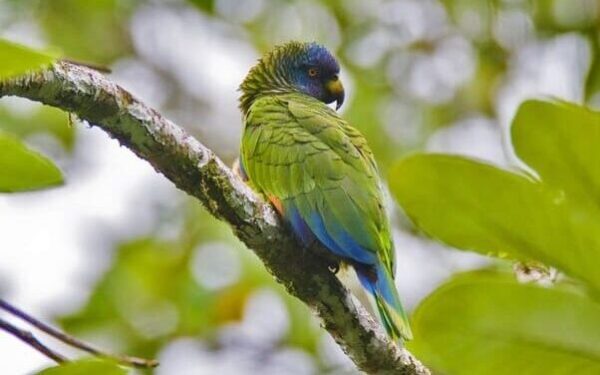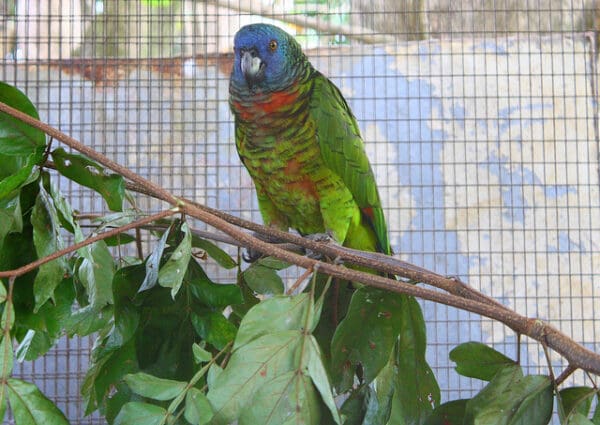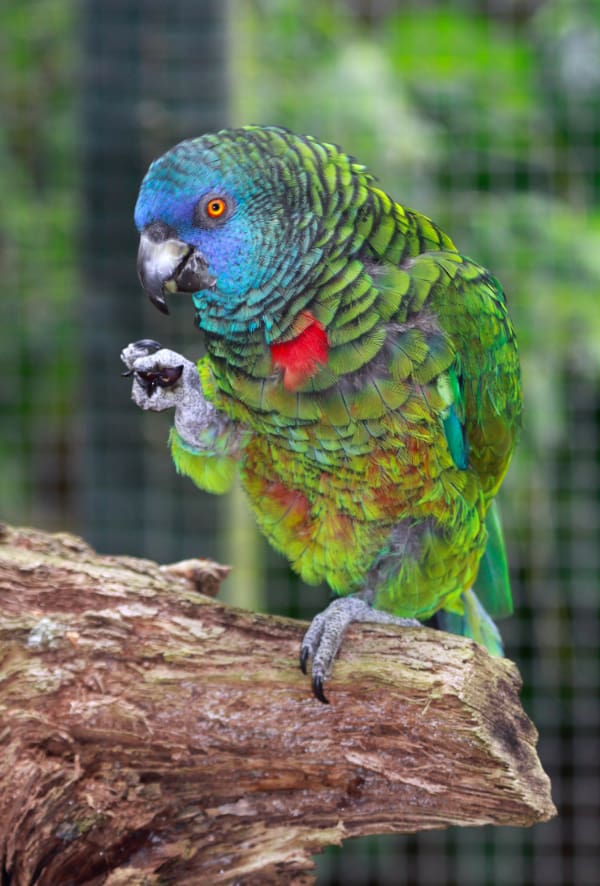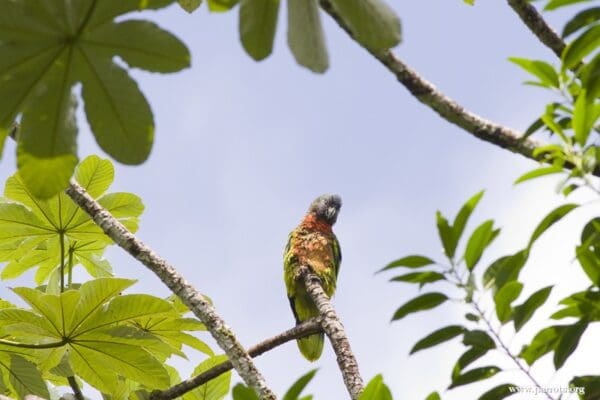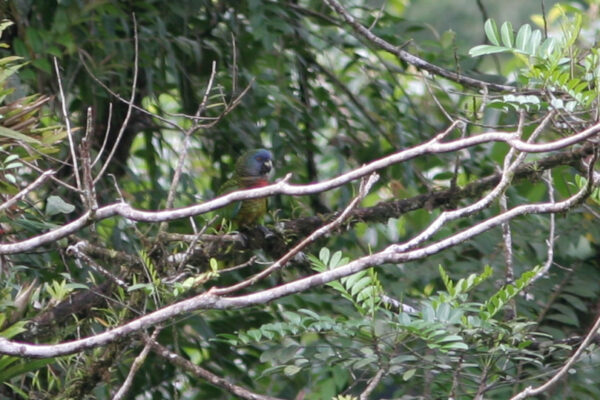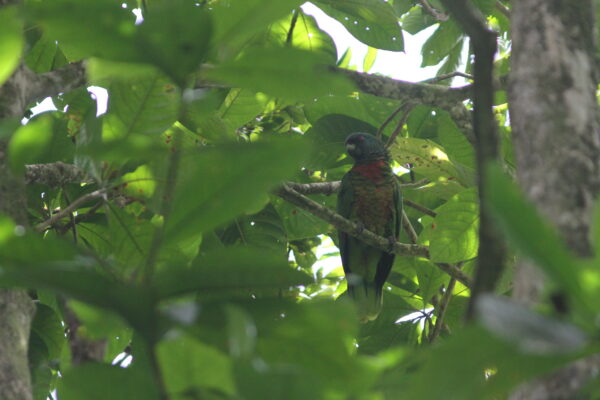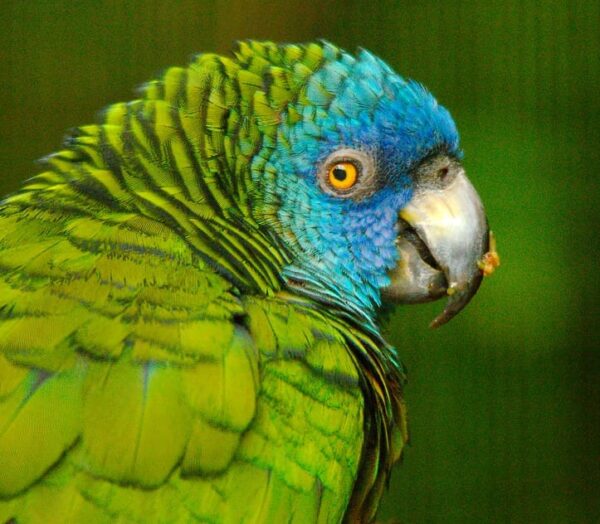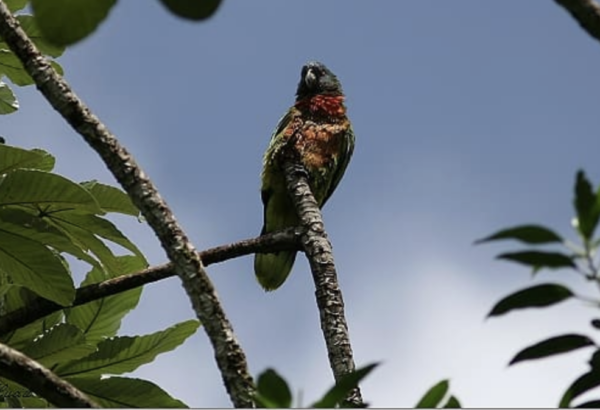St. Lucia Amazon
Also known as:
St. Lucia Parrot, Blue-masked Amazon, Versicolor Amazon
Also known as:
St. Lucia Parrot, Blue-masked Amazon, Versicolor Amazon
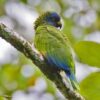
![© Mark Stevens [CC BY-NC-SA 2.0] via Flickr A St. Lucia Amazon perches on browse](https://parrots.org/wp-content/uploads/2023/01/wpt_St.-Lucia-Amazon_1423-9-100x100.jpg)
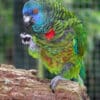
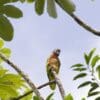
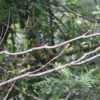
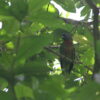
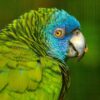
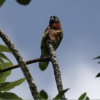
DID YOU KNOW?
This species is confined to an area of about 25,000 acres (10,000 ha) on the island of St. Lucia in the Lesser Antilles.

Amazona

versicolor
Size:
43 cm (16.8 in)
Weight:
700-800 g (24.5-28 oz)
Subspecies including nominate:
one
Colour Adult:
Both adults generally green plumage, with feathers tipped black; purple/blue forehead, lores and forecrown, merging into paler blue on hindcrown, ear coverts and upper cheeks; red stripe across foreneck, reaching to upper breast; green feathers on lower breast, widely edged red/brown and tipped with black; feathers of upper abdomen red/brown with green bases and tipped with dusty black; red outer secondary feathers turning to purple/blue near tips, the inner secondaries green turning to purple/blue toward tips; carpal edge yellow/green; tail green with hidden red markings at base. Beak grey. Eye ring grey, eye orange.
Colour Juvenile:
As in adult but duller. Beak grey. Eye brown.
Call:
Calls are raucous, harsh screeching while in flight. Occasional series of shrill squawks. Also high-pitched cackling or soft purring while feeding or preening.
More Information:
Avibase
St. Lucia Forestry Department Environmental Education Unit
Content Sources:
CITES
BirdLife International
Cornell Lab of Ornithology/Birds of the World
Parrots: A Guide to Parrots of the World, Juniper and Parr, 1998
Parrots of the World, Forshaw and Cooper, 1989. 2010 edition
Parrots of the World, Forshaw, 2006.
Durrell Conservation Trust.
Captive Status:
Extremely rare.
Longevity:
Possibly 30 yrs.
Housing:
Indoor area 1.8 x 3.6 x 2.2-3.0 m (6 x 12 x 7-10 ft); outdoor planted aviary 7.2-9.0 x 3.6 x 3.6 m (23.5-30 x 12 x 12 ft).
Diet:
(From Jersey Zoo:) Limited high fats in the diet; provide fruits, vegetables and high quality supplements in the form of kibble or powder. Hard boiled egg. Butterbeans, pinto, mung, soy and haricot beans; also lentils and pearl barley. All pulses are soaked overnight, then rinsed and served.
Enrichment:
Are avid chewers, so a variety of bird-safe branches (fir, elder, willow and pine) should be used. Also provide colourful and attractive foods in various forms for behavioural enrichment. Also bathing. Are good climbers, so provide ropes, swings, different sized perches and ladders.
Nest Box Size:
28 cm x 28 cm x 120 cm (11″ x 11″ x 47″) vertical box.
Clutch Size:
1-3
Fledging Age:
About 7 weeks.
Hatch Weight:
—
Peak Weight:
—
Weaning Weight:
—
World Population:
1750-2250 individuals, slowly increasing.
IUCN Red List Status:
Vulnerable
CITES Listing:
Appendix I
Threat Summary:
A BirdLife ‘restricted-range’ species. Is affected by habitat loss through human population expansion, selective logging of mature trees reducing nesting sites, hunting, the wild bird trade, and to a lesser extent, hurricanes. Conservation action may have saved this species from extinction. Numbers are now increasing and there is evidence of a small range expansion. Despite this however, the population remains small and given its sole presence on a single isolated island, it remains at significant risk from hurricanes, relaxation of hunting restrictions, and habitat destruction, among others, which could rapidly drive the species to a higher threat category.
Range:
Found on St. Lucia, Lesser Antilles, West Indies.
Habitat:
Found mostly above 300 m (984 ft). Occurs in moist mature forest, now restricted mainly to central and southern mountains; less commonly in tall secondary growth forest. Occasionally a visitor to cultivated areas.
Wild Diet:
Fruits and/or seeds of Clusia, Talauma, Pouteria, Miconia, Manilkara, Byrsonima, Sloanea, Pithecellobium, Dacryodes, Cassipourea, Protium, Torrubia, Pterocarpus, Sterculia and several palms. Also bananas following hurricanes and loss of natural food source trees.
Ecology and Behaviour:
Stays in forest canopy. Reported in flocks of up to 20 birds. Communal roosting.
Clutch and Egg Size:
1-3 white eggs, 42.0 x 33.0 mm (1.6 x 1.3 in).
Breeding Season:
February-March beginning. Nest is in tree cavity.
